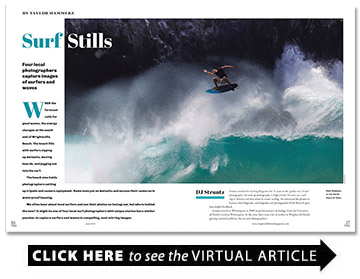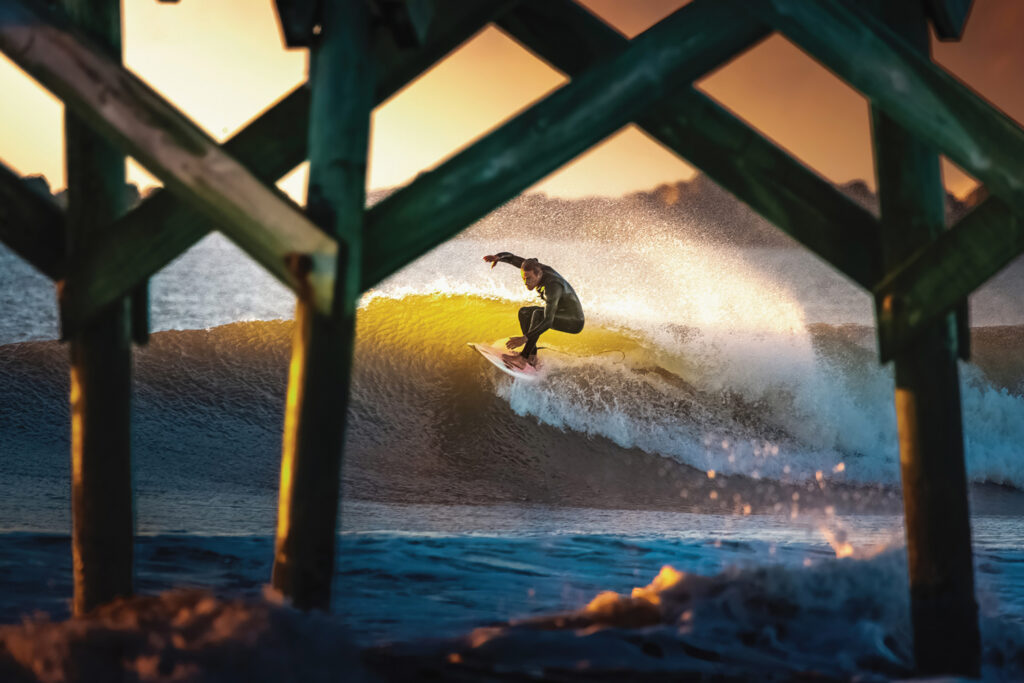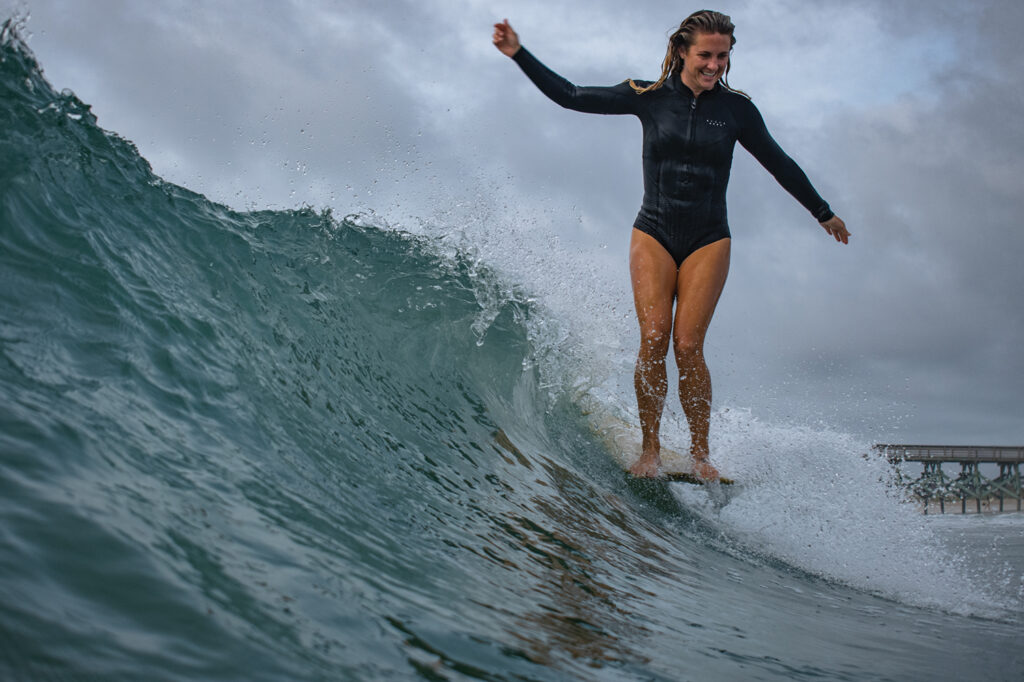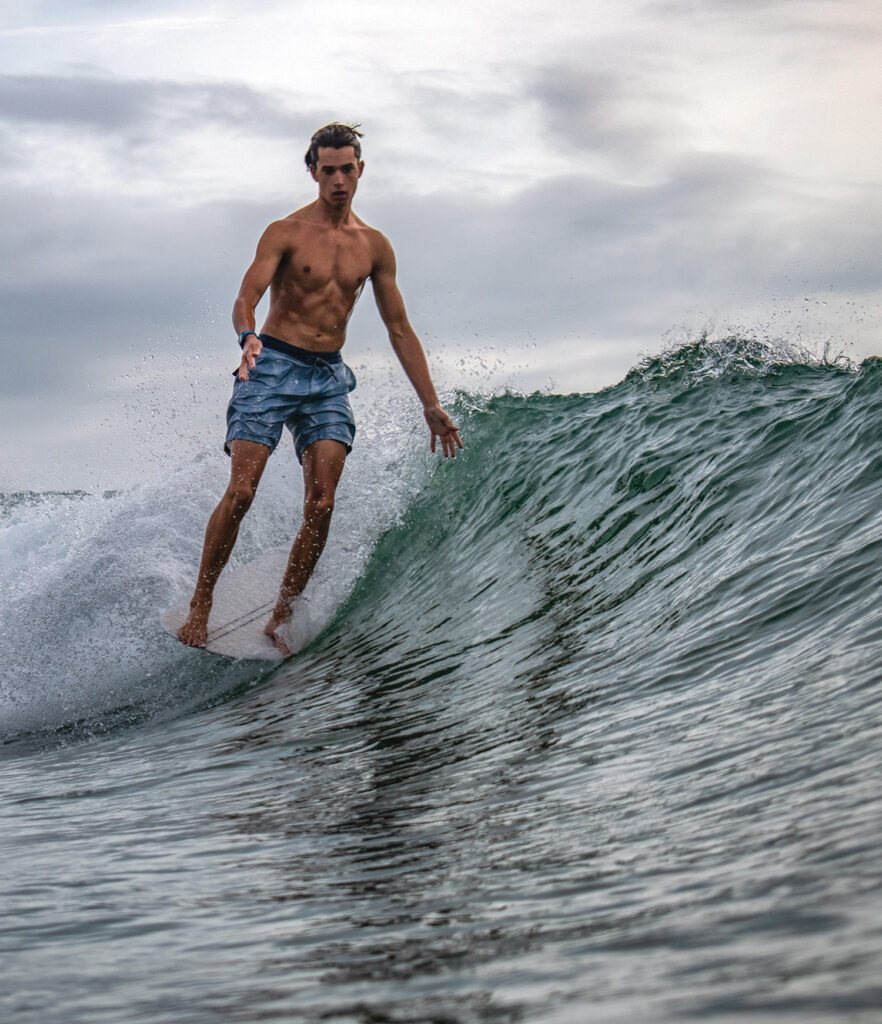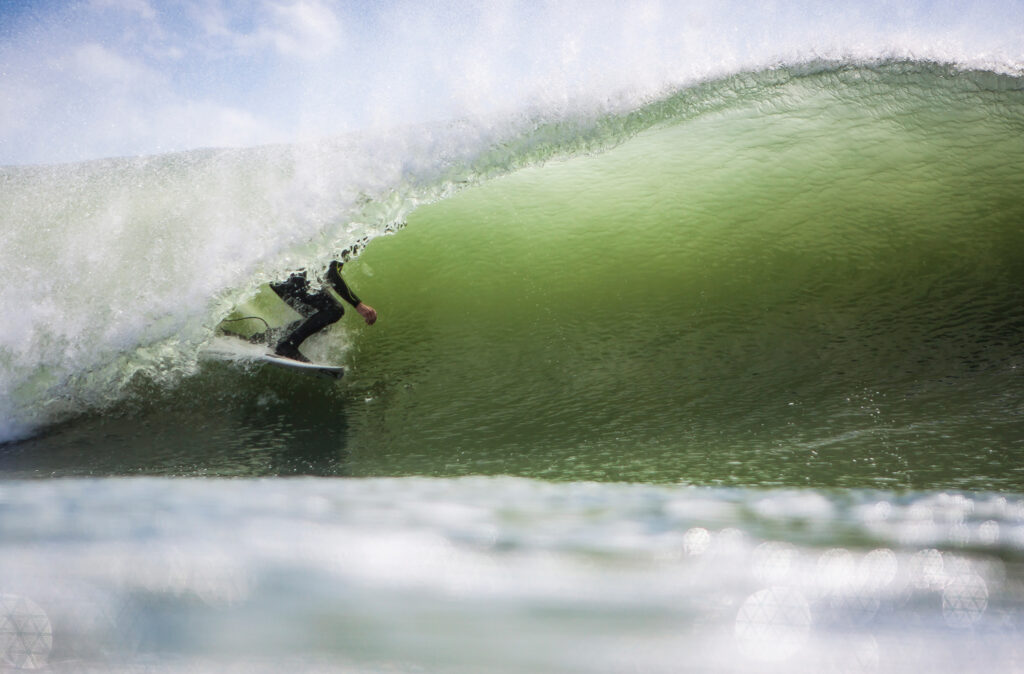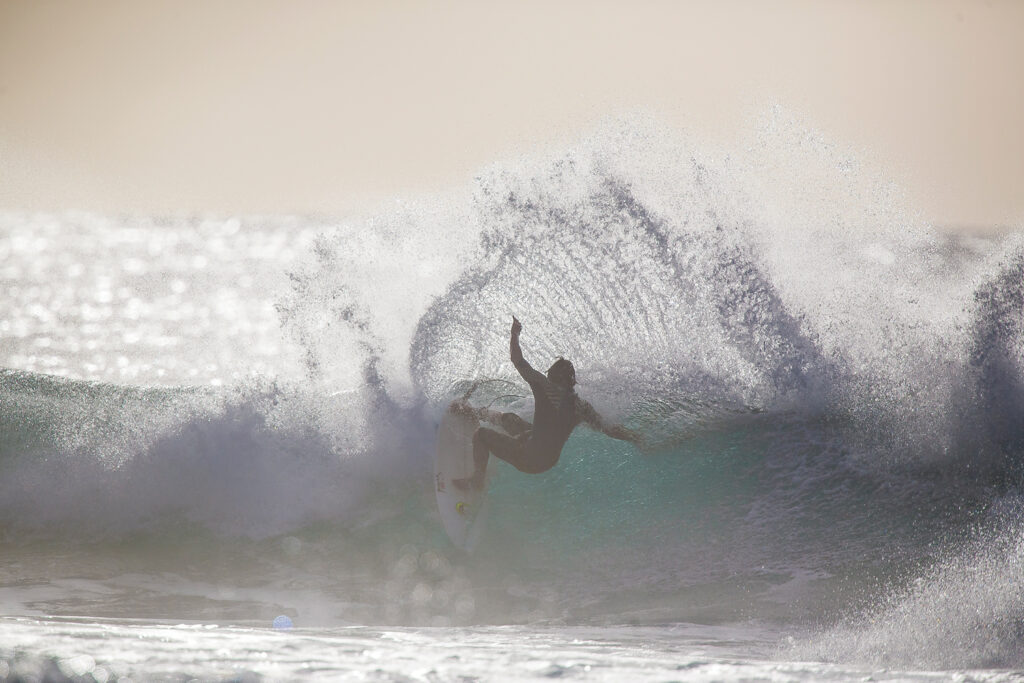Surf Stills
Four local photographers capture images of surfers and waves
BY Taylor Hammeke
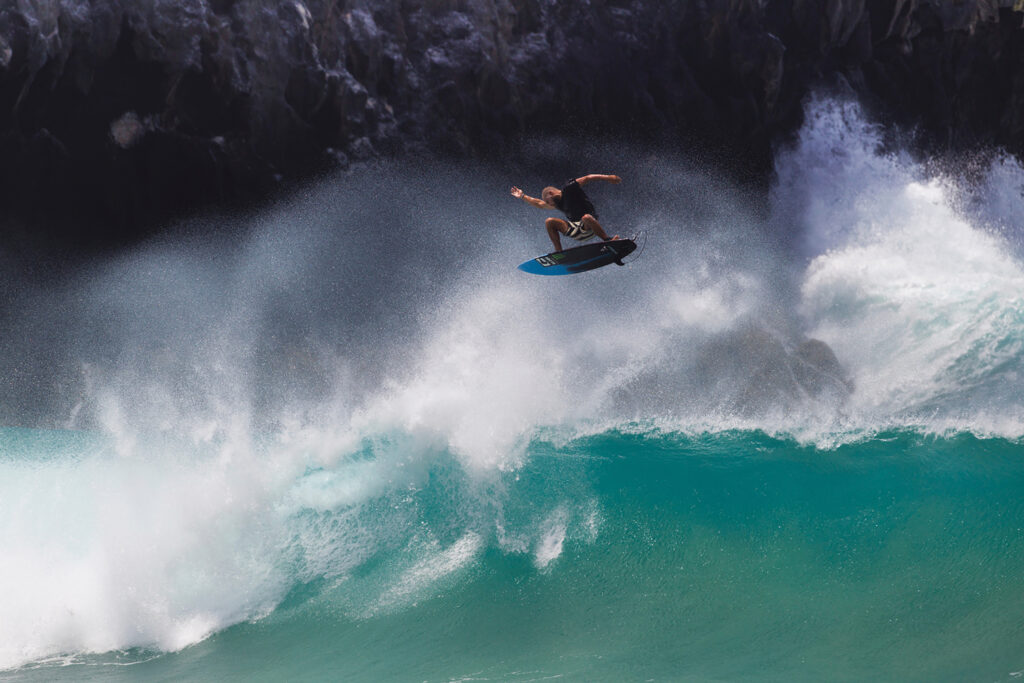
When the forecast calls for good waves, the energy changes at the south end of Wrightsville Beach. The beach fills with surfers zipping up wetsuits, waxing boards, and jogging out into the surf.
The beach also holds photographers setting up tripods and camera equipment. Some even put on wetsuits and encase their cameras in waterproof housing.
We often hear about local surfers and see their photos on Instagram, but who is behind the lens? It might be one of four local surf photographers with unique stories but a similar passion: to capture surfers and waves in compelling, soul-stirring images.
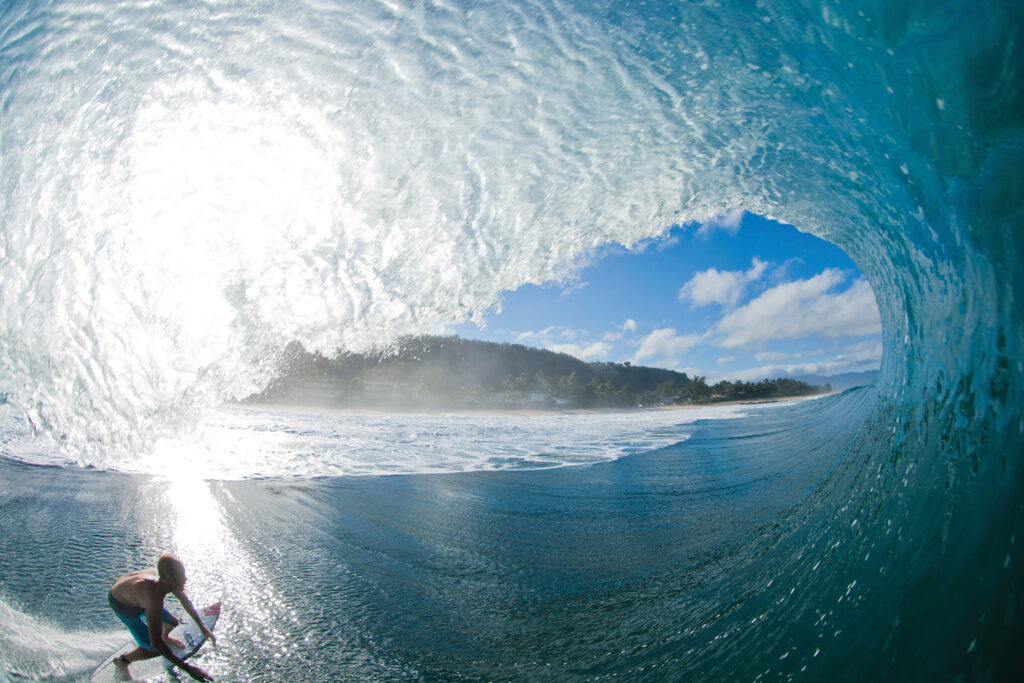
DJ Struntz
Struntz worked for Surfing Magazine for 15 years in the ‘golden era’ of surf photography. He took up photography in high school. He went on a surf trip to Mexico and shot when he wasn’t surfing. He submitted the photos to Eastern Surf Magazine, and longtime surf photographer Dick Meseroll gave him helpful feedback.
Struntz moved to Wilmington in 2000 to get his master’s in biology from the University of North Carolina Wilmington. At the time there were a lot of surfers in Wrightsville Beach getting national publicity, but no surf photographers.
“I exploded into the void with the right surfers that the media wanted to see,” he says.
He swiftly improved his skills, while still submitting photos for Eastern Surf Magazine.
His first surfing photography trip was for Trans World to Nicaragua. After that trip, Surfing Magazine hired him. Over the next 15 years Struntz traveled to more than 55 countries capturing the “best surfers in the best places,” he says. He shot from land, on the water, and from helicopters.
He would also do trips for sponsors such as Globe and Reef, and worked on multi-country video projects as the still photographer.
“It was a bit of a whirlwind,” he says. “I got married to a WB local, and my first trip was 10 days after our honeymoon. It was an awesome time, living a dream life. But it came at a cost being gone so much.”
His most interesting trip was to Yemen in 2006. He took three surfers and “disappeared off the face of the earth for two weeks” to an island called Socotra, a World Heritage Site.
One day the locals indicated one side of the island had too many sharks and the waves were too big. That piqued the crew’s interest. They hiked over a mountain to reach the surf spot. The local community killed a few goats to honor their arrival, they met the village elder, and camped on the beach.
“None of us will ever forget that,” he says.
Struntz still takes surf photos when Surfers Healing comes to town. You can view a short film about him on Vimeo labeled “Fighting Water” that Matt Batchelor produced.
Richard Perry
Richard Perry often can be spotted at the south end of Wrightsville Beach, sporting a white beard. He used to take photos under the name Akira Media Designs. It was tough for surfers to remember, so he became Beard on the Beach. He jokes he can never shave now given his branding.
He took up photography from a young age. He started surf photography for Indo Jax Surf School when his 6-year-old son was taking lessons, and continued shooting surf camps every week in the summer. Parents always appreciated getting photos of their kids surfing.
“Everybody looks cool on a surfboard,” Perry says.
He gradually upgraded his gear and started taking photos of surfers in the offseason, especially when Covid hit. A lot of his subjects are casual surfers; he tries to capture surfers that other photographers might not.
His favorite story is about a man whose wife bought one of Perry’s photos. It’s the only one the surfer has of himself on the waves. It was very touching to be able to provide the memento.
“People are so appreciative,” he says. “They come up to me and always say, ‘We really appreciate you doing this.’”
Allison Bowman
Bowman grew up in the Outer Banks and would chase hurricanes for the best waves. He surfed for 10 years with no proof of riding the big waves, because nobody was out there taking photos.
He got into scuba diving when he went to college in Florida and ran a business financing dive trips for college students. He wanted photos to help market the business, so he purchased underwater housing to communicate what he saw underwater.
He became a surf photographer when he moved to Wilmington, shooting for surf shops including Aussie Island Surf Shop.
Bowman usually goes into the water to take photos, using a Nikon D850 with Ikelyte DL 200 housing. He has a leash on the camera for use in waves.
“I get a warm welcome in the south end and anywhere on Wrightsville,” he says. “People are stoked to get pictures of themselves.”
He edits the photos to even out the shadows and color correct, then posts them to a Google drive where surfers can purchase images of themselves mastering tricks or enjoying a day out on the waves.
“There is a lot of anticipation in my photography,” he says. “Some surfers have different selling points on what they are trying to document and are stoked to get cool looking stuff.”
Sean Ruttkay
Ruttkay grew up in the Washington, D.C. area, three hours from the beach. He developed a love of surfing from the photos in Surfing Magazine. He got a surfboard at a young age and would paddle out anytime his family was at the beach.
He moved to Wilmington to attend UNCW in 1999 and became “enthralled with this part of the globe.” He surfed as much as possible and found out what inspired him most was the wave itself. He began shooting waves without people on them in 2005. He uses the color and light of the water to bring the emotion out in every piece.
Ruttkay sells his work under his EDA Surf Art brand. He uses a Canon 5D Mark IV with Aquatech housing.
His father is a painter who shared his process of applying pictures to aluminum. Ruttkay also developed a process of applying resin in layers to give photos a 3D look.
Ruttkay takes photos while in the water 90 percent of the time, in a shore break or a still ocean. His work is on display in multiple businesses around Wilmington, including the hospital, Live Oak Bank and restaurants.
Photography is not just a career, but something he truly enjoys to his core.
“When I don’t do it for a period of time, I feel it in my soul,” he says. “I hadn’t shot for a few weeks and didn’t feel good. I got back into it, and it’s like a rebirth of positive emotions. You’re out in nature and you’re capturing it, and you’re sharing it. There are a multitude of effects that occur in the brain.”
Ruttkay hosts a podcast called Speaking from Water, interviewing surf photographers from around the world.
